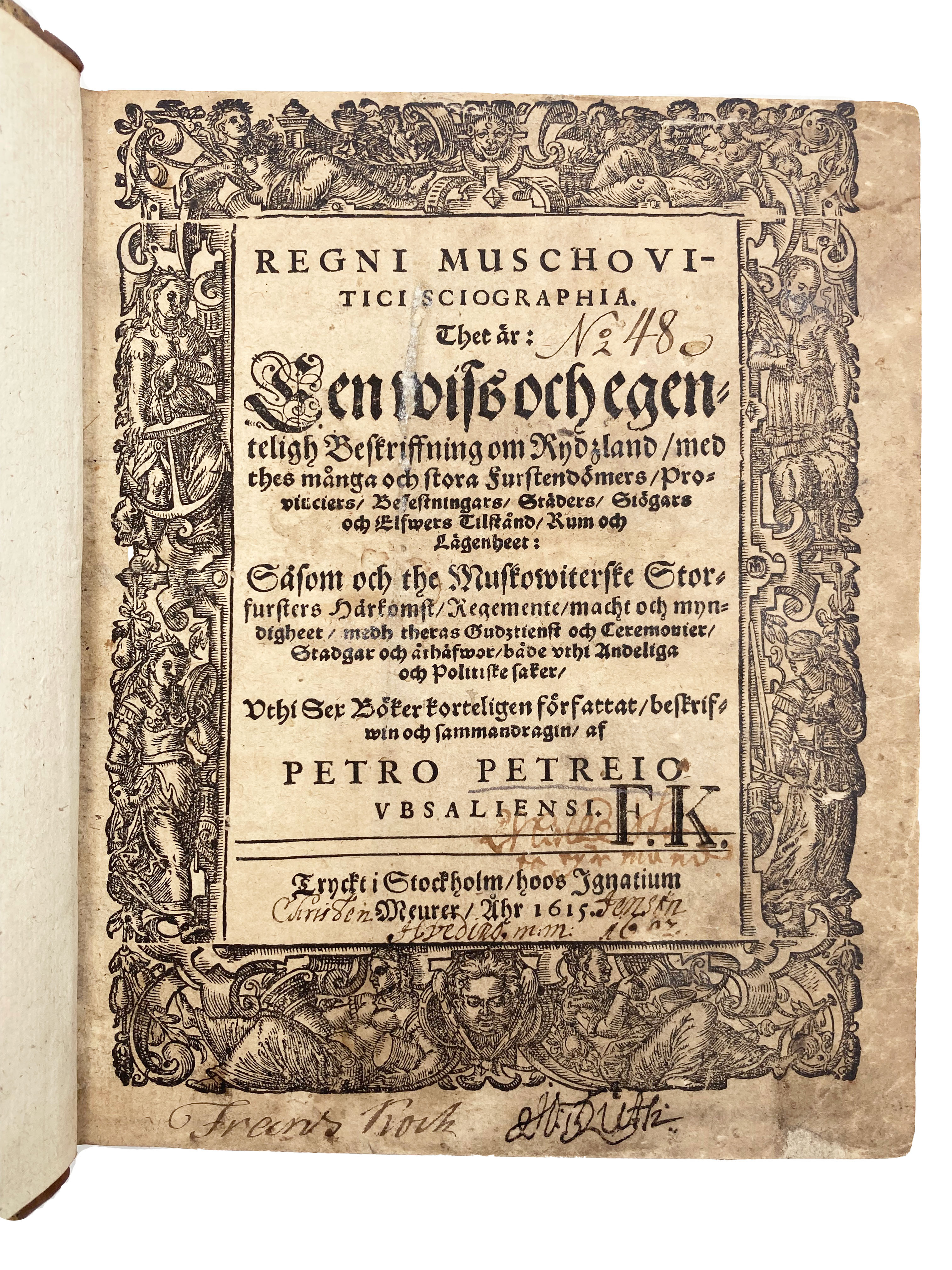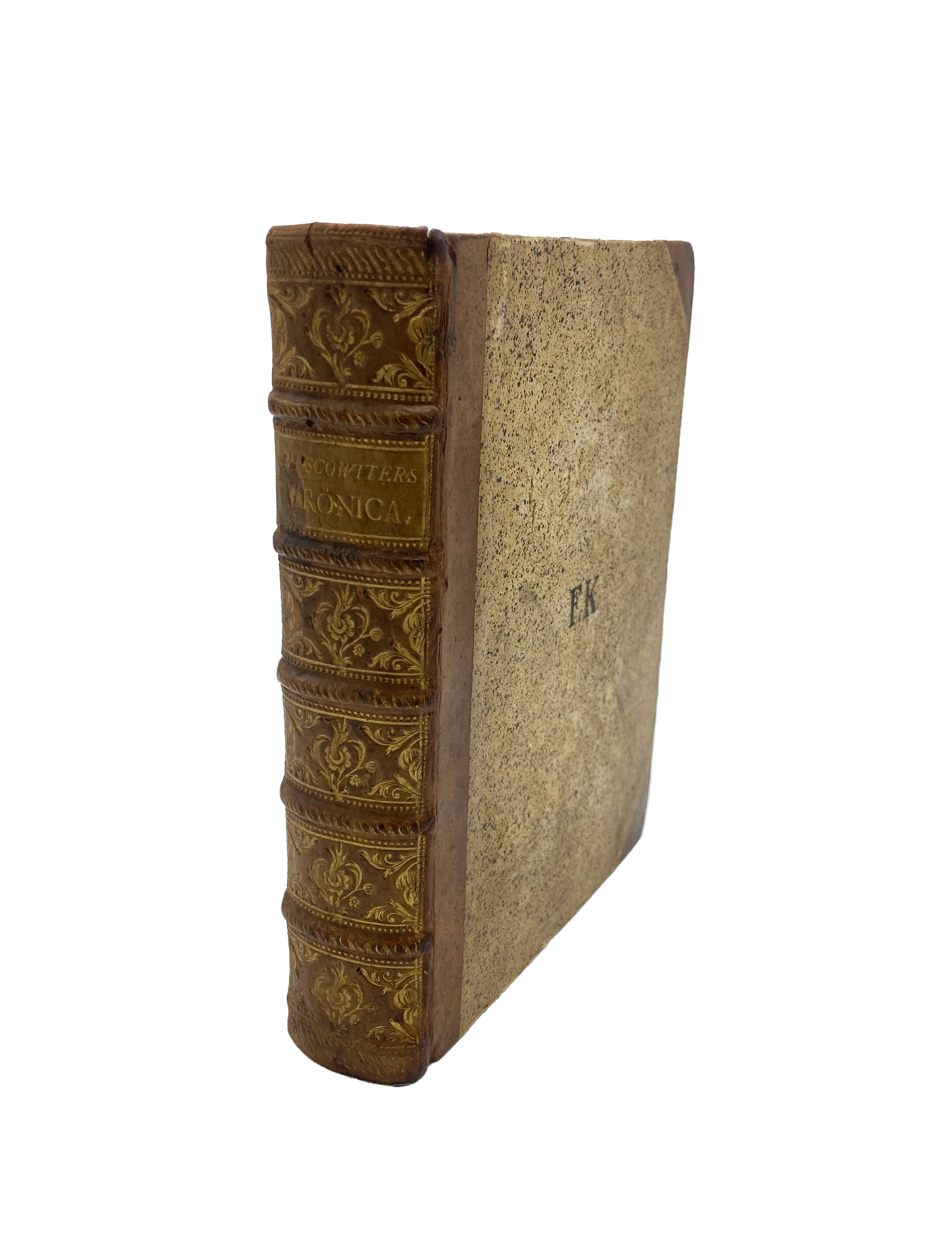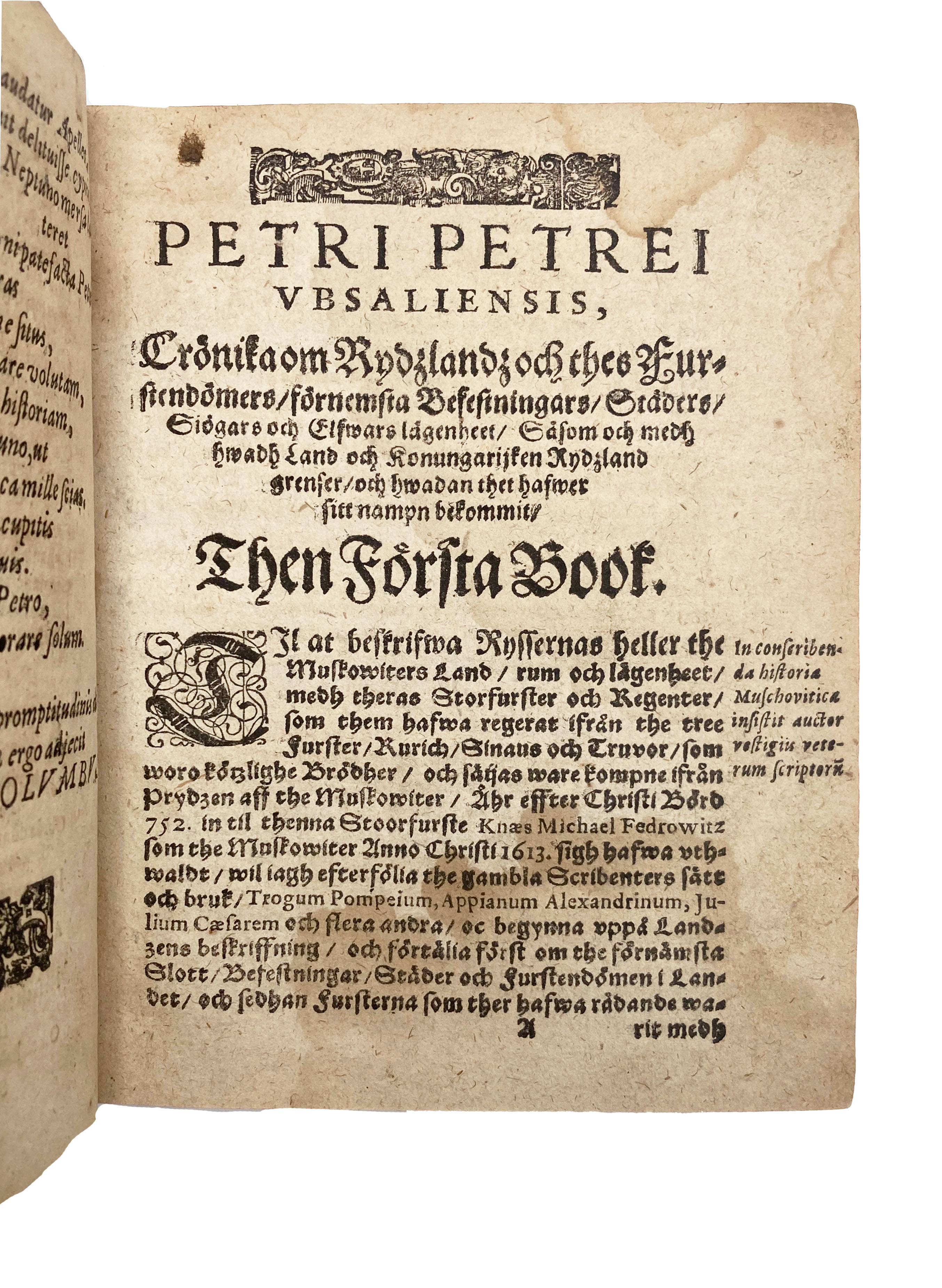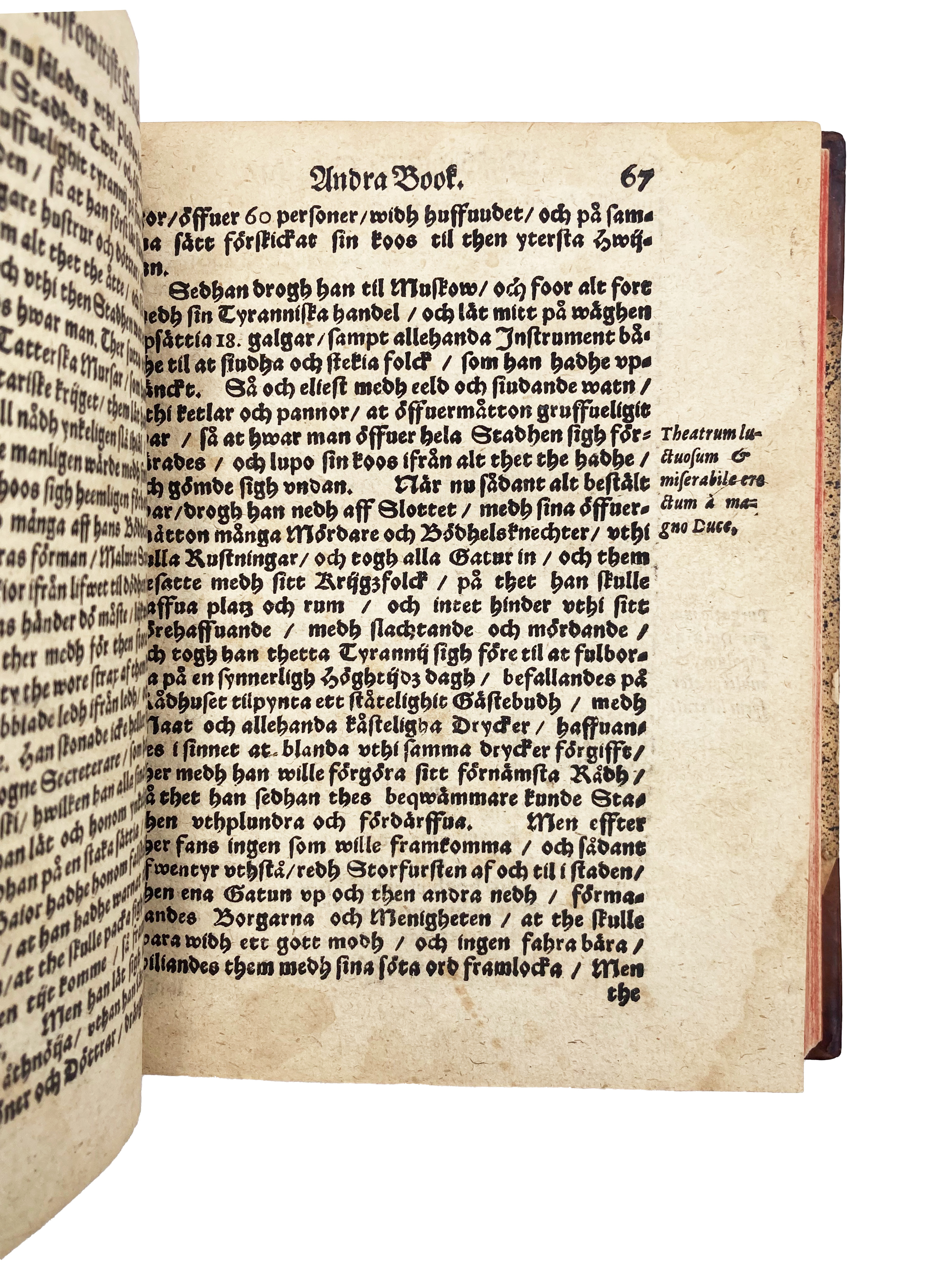PETREIUS, Petrus
SWEDISH WORK ON RUSSIA
Regni Muschovitici sciographia.
Stockholm, Ignatius Meurer, 1615£3,950.00
FIRST EDITION. Small 4to. 6 parts in 1, separate titles, pp. [12], 111, [1]; [4], 3-274; [3], 2-36; [3], 2-15, [1]; [3], 2-33, [1]; [3], 2-50. Gothic letter. General title within woodcut border, woodcut royal Swedish arms to verso, strengthened at head and foot, decorated initials and ornaments. Small repair to last leaf, uniform browning, heavier to couple of central gatherings, poor quality paper. A good copy in c.1800 sprinkled half calf over marbled boards, spine gilt, a.e.r., ‘FK’ (Frans Koch) stamped to upper cover, contemporary ms inscription, ms ‘N. 48’ (probably Koch’s) and ‘Christen Jensen Hveding (?) 16(?)7’, ‘Franz
Koch’ (and his ink stamp F.K.) and one illegible autograph and another ‘(?) Ruth(?)’, all to first title.
First edition, in Swedish, of this most influential C17 account of the duchy of Muscovy and the Russian provinces. Petrus Petreius (Pers Persson) (1570-1620) was a Swedish diplomat and intelligencer from Uppsala, who worked for several years in Russia in the early C17 century. Petreius’ account marked a new attitude towards the perception of Russians in Sweden. The ‘Sciographia’ was translated into German and published in Leipzig in 1620. The six parts are devoted to the cities and provinces, history (from Rurik to 1612), political ceremonies, warfare, customs, and religious rites of Russia and its people. Most of the second part is concerned with the period spanning the reign of Boris Godunov and the start of the Romanov rule. Petreius relied heavily, especially for the section on the False Dimitris, on the yet unpublished Latin eyewitness account by Konrad Bussow. He interspersed it with personal observations based on direct experience, like the sight of the corpses of Fyodor II Borisovich and his mother bearing the imprint of the ropes which strangled them. Petrius used Russian borrowings to render Russian concepts, such as ‘bojar’, and the German translation of his work was a major source for Karamzin’s history of Russia.
This copy was in the library of Christen Jensen Hveding, likely the same (1640-96) businessman and magistrate in Øst-Finnmark during a major time for witch trials in Sweden; in fact, Hveding was among the judges who condemned a local woman, Nille Jensdatter, to burning at the stake.
On the front pastedown is an intriguing 3-line ms note c.1800 in an unidentified language. It looks somewhere in between Amharic/Ge’ez, Armenian, and archaic Illyrian or Balkan alphabets, though it does not appear to exactly match any. It also bears atypical diacritics, mostly reminiscent of Semitic languages, but including an unusual + sign. It may be a garshunographic sample or an early owner’s cryptographic note.
USTC 252782; Collijn n.700.





